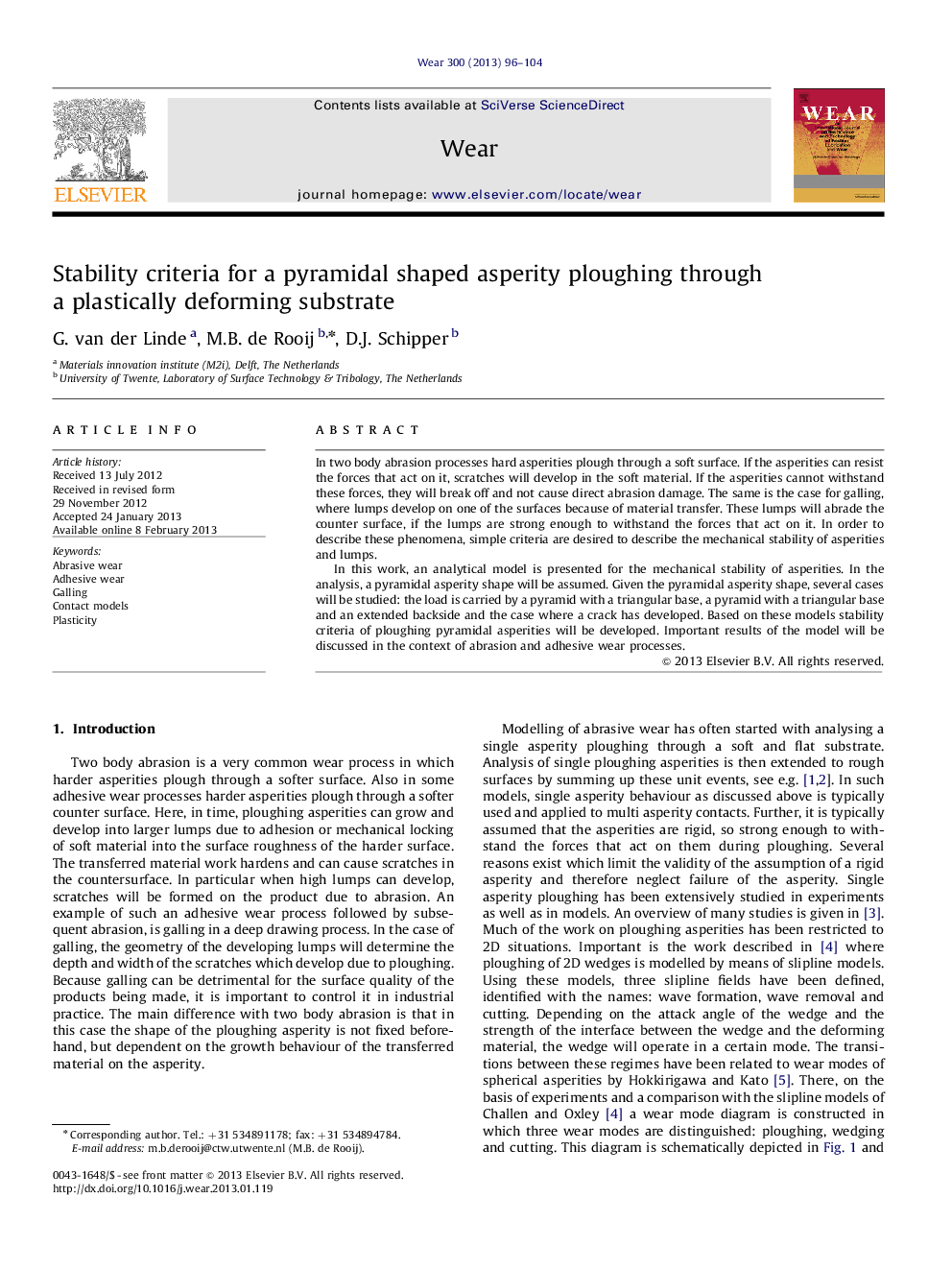| Article ID | Journal | Published Year | Pages | File Type |
|---|---|---|---|---|
| 617643 | Wear | 2013 | 9 Pages |
In two body abrasion processes hard asperities plough through a soft surface. If the asperities can resist the forces that act on it, scratches will develop in the soft material. If the asperities cannot withstand these forces, they will break off and not cause direct abrasion damage. The same is the case for galling, where lumps develop on one of the surfaces because of material transfer. These lumps will abrade the counter surface, if the lumps are strong enough to withstand the forces that act on it. In order to describe these phenomena, simple criteria are desired to describe the mechanical stability of asperities and lumps.In this work, an analytical model is presented for the mechanical stability of asperities. In the analysis, a pyramidal asperity shape will be assumed. Given the pyramidal asperity shape, several cases will be studied: the load is carried by a pyramid with a triangular base, a pyramid with a triangular base and an extended backside and the case where a crack has developed. Based on these models stability criteria of ploughing pyramidal asperities will be developed. Important results of the model will be discussed in the context of abrasion and adhesive wear processes.
► Analytical model is presented for the mechanical stability of ploughing asperities. ► Based on these models stability criteria of ploughing pyramidal asperities are developed. ► Important results will be discussed in the context of abrasion and adhesive wear processes.
